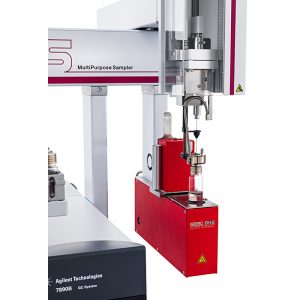Direct injection for gas chromatographic profiling of alcoholic beverages is usually preferable, but where spirits and liquors contain appreciable amounts of non-volatile material, some mode of pre-treatment may be required to avoid both inlet and column contamination. This consideration applies in particular to products aged for extended periods in wooden barrels and especially products containing added sugar, as volatile artefacts from sugar decomposition in the hot injection port can also complicate the chromatogram.
In this paper a combination of static and dynamic headspace analysis is described for profi ling both abundant and trace compounds in these products. Static headspace is used with a tenax packed injection port liner for the abundant compounds. Dynamic headspace uses an additional purging step to a second tenax liner which can then be desorbed to the same injection port liner used for the simple static headspace. In this case the previous abundant compounds are overloaded in the chromatogram but many additional trace compounds are now apparent. For both techniques the only sample preparation required is dilution of the sample in a headspace vial and relevant automated sequences in either static or dynamic mode are also run from the same autosampler rail. A PTV injector in solvent vent mode is used in both cases for lowest detection limits. Application of this combined approach constitutes an effective routine analysis protocol for this particular class of products while avoiding dry extract contamination.



